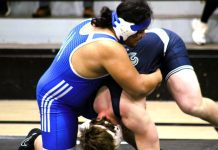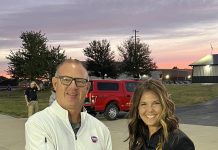It was a dark day on Jan. 6 as Congress planned to confirm the Electoral College vote for the next president. Around 1 p.m. a group of pro-Trump protesters pushed their way into the Capitol building, disrupting the official count as Congress was forced into lock down. The issue at hand was the President’s claims of voter fraud and a stolen election.
This was by no means the first contested election in the U.S. The 1800 and 1824 elections were both decided in Congress. The 1876 and 2000 elections were both decided in the courts. Let’s also not forget the South seceded from the nation in 1860 because of Lincoln’s election. In fact, in 2001, 2005 and 2017 some Democrats protested the final confirmation vote the same way some Republicans did this year. In these cases, the Vice Presidents acted like Mike Pence this year and did their duty and confirmed the vote even with political pressure not to do so.
The differences between this current election and the past ones were that the controversies did not involve a sitting president. They were always between two new candidates. 1800 did have an incumbent president in the race, but the controversy was between Thomas Jefferson and Aaron Burr. Trump is the first sitting president to contest his defeat. The other more important difference was those election controversies were all handled peacefully, except 1860. Yes, there have been many protests over elections, but trying to take the Capitol to obstruct the vote is unprecedented.
There have been other elections with fraud claims, most recently, the 2016 election that Democrats claimed foul because of Russian influence. Yet, the one I think is important because of the behavior of the candidates is not remembered today as controversial but at the time was called out by many as fraudulent.
Today, when discussing the 1960 election, most think of the young charismatic John F. Kennedy manhandling and crushing the much older Richard Nixon in the first televised debates. I would argue this is a false memory. For one, Nixon was only four years older than Kennedy and, two, this was one of the closest elections in history. The closeness of the election meant that several states were swing states and just one or two of them going the other way meant a difference in the president.
Two of the states that could have gone either direction were Texas and Illinois. Both ultimately voted for JFK, but not without some controversy. In Texas it was claimed that JFK’s V.P., Lyndon Johnson, used undue influence and fraud to guarantee a Democratic win. Yet it was Illinois that captured the nation’s attention, especially the mayor of Chicago, Richard Daley. Daley is one of the men credited with the quote, “Vote early and vote often.” On election night, he called JFK to tell him basically that, with a little luck and some help from some friends, he would win the state. Daley was a mayor either loved or despised, depending on your political leaning, but no one questioned his power over the city and even the state. Daley was rumored to be involved in ballot stuffing, especially in Cook County, that turned the state towards Kennedy.
The cries of corruption were minimal on election night and ultimately JFK was the victor. It was after the election that the rumors began to build. The man more than any other who began to beat the drum of fraud was a reporter and friend of Nixon, Earl Mazo. He began to investigate the rumors and wrote a series of articles detailing his evidence. He had found graveyards in Chicago where all the permanent residences had voted. The story that most stuck out was the 56 voters whose residences all turned out to be the same abandoned house. Yet as interesting as these stories were, most were never published at the insistence of Nixon.
Nixon asked his friend to stop running the stories. His request was not because he felt they were untrue. In fact, Nixon, for the rest of his life, privately insisted the election was stolen from him, and many from his administration insisted they had evidence of fraud. What Nixon believed, however, was that in the midst of the Cold War his nation could not afford a challenge to democracy. Recounts were requested, but after a couple of legal challenges failed, Nixon did what was best for the nation and stepped aside. It was Nixon’s job as sitting Vice President to confirm the votes for Kennedy in the same ceremony that was interrupted Jan. 6 with Pence. Nixon did what Trump could not. Whether or not there was fraud, Nixon believed there was. But he put his ego aside for the good of the nation and did not resist.
While all of Trump’s court challenges were completely legal, almost all of them were found by several courts to be without merit. We have seen similar actions in many elections. Where Trump will be remembered with infamy was his refusal to accept the outcome even after the courts rejected him. The difference may be this: eight years later Nixon ran a second time and won. However, after Jan. 6, even Trump’s staunchest supporters turned on him, making any effort for a second run obsolete.
















